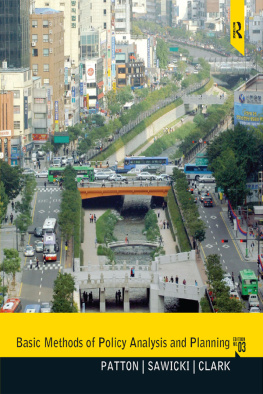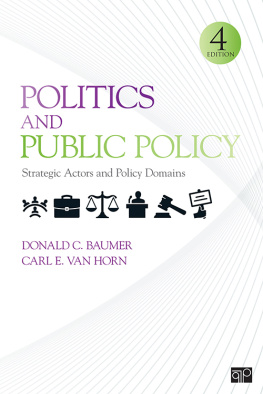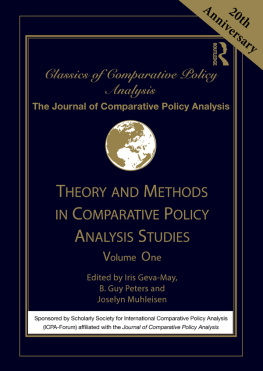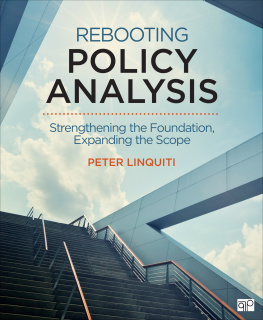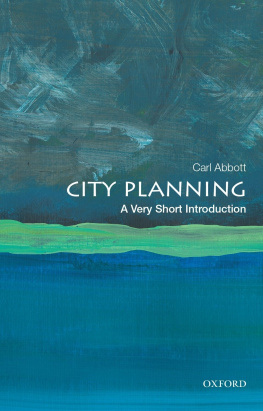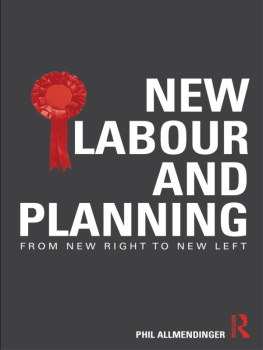First published 2013, 1993, 1986 by Pearson Education, Inc.
Published 2016 by Routledge
2 Park Square, Milton Park, Abingdon, Oxon OX14 4RN
711 Third Avenue, New York, NY 10017, USA
Routledge is an imprint of the Taylor & Francis Group, an informa business
Copyright 2012, 2009, 2006, 2003 Taylor & Francis. All rights reserved.
All rights reserved. No part of this book may be reprinted or reproduced or utilised in any form or by any electronic, mechanical, or other means, now known or hereafter invented, including photocopying and recording, or in any information storage or retri eval system, without permission in writing from the publishers.
Notice:
Product or corporate names may be trademarks or registered trademarks, and are used only for identification and explanation without intent to infringe.
Credits and acknowledgments borrowed from other sources and reproduced, with permission, in this textbook appear on the appropriate page within text.
ISBN: 9780137495092 (pbk)
Library of Congress Cataloging-in-Publication Data
Patton, Carl V.
Basic methods of policy analysis and planning / Carl V. Patton, David S. Sawicki, Jennifer J. Clark. 3rd ed.
p. cm.
Includes bibliographical references and index.
ISBN-13: 978-0-13-749509-2 (alk. paper)
ISBN-10: 0-13-749509-9 (alk. paper)
1. Policy sciencesResearch. 2. Public administration. 3. Political planning. 4. City planning.
I. Sawicki, David S. II. Title.
H97.P38 2013
320.6dc23
2011048471
Basic Methods of Policy Analysis and Planning presents quickly applied basic methods for analyzing and resolving planning and policy issues at state and local levels. Quantitative and qualitative methods are combined in a systematic approach to addressing such policy dilemmas. Besides methods, the book presents the rationale and process of policy analysis as well as policy application cases.
The book is divided into two parts: : Cases presents seven policy cases, which range from brief mini-cases that can be solved in a day or two to longer, more complex cases that may take up to 25 hours of analytic time. The cases, like the methods chapters, are intended to lead the reader to integrate quantitative and qualitative approaches. Methods chapters include glossaries and exercises. All exercises and cases are taken from real experiences, and they have been used successfully in instructional settings at three universities.
Most of the methods presented here have long been used by planners and analysts. We did not invent them, and in many cases it is impossible to identify who did. Rather, we have each spent careers applying these methods, learning which work the best, discovering how others should be modified, and developing realistic exercises and cases that support the learning of these quickly applied methods.
This book, then, is for students and analysts who seek to learn quick, basic methods that can be applied to a range of policy problems. It should be especially useful for the beginning analyst or the person starting the study of policy analysis and planning. The book assumes no prior knowledge of advanced mathematics or economics on the part of the reader. We deliberately avoided methods that require such knowledge, but the reader who has these skills can certainly apply them to the exercises and cases. We also avoided methods that involve extensive research. Our point is that many of todays most important policy problems are resolved quickly, and time is seldom available for researched analysis. Planners and analysts must use quick, basic methods in order to generate, test, and even advocate alternatives in the time available and with the resources at handif they are to have an impact on public policy. The methods in Basic Methods of Policy Analysis and Planning respond to this need.
NEW TO THIS EDITION
New and updated case information covers topics including new legislation and increased public interest in sustainability and the environmental impacts of public policy giving students examples of current policy issues.
Given that policy issues are often resolved quickly, an increased emphasis has been placed on providing students with quick methods for analyzing policy problems through new technologies and web-based research.
All methods chapters have been updated to provide students with the current skills they need to be successful in their policy analysis and planning careers.
Glossaries and new end-of-chapter exercises allow students to practice and apply what they read throughout the text.
A new interior design and updated pedagogy enhance visual learning and provide clear illustrations of concepts discussed in the text.
A comprehensive Instructors Manual will accompany this new edition of Basic Methods of Policy Analysis and Planning. Please visit the companion website at www.routledge.com/9780137495092.
ACKNOWLEDGEMENTS
Preparing a book such as this requires the assistance of many people. The most important and critical were the students who experienced drafts of the text, exercises, and cases. They provided many ideas about how to improve their usefulness. For that we are grateful. We also appreciate the contribution of Sean J. Gamble, associate attorney at the law firm of Friedman | Rubin, to the legal searches section as well as Kirsten Bandyopadhyay, Georgia Institute of Technology, for contributions to the spatial analysis sections, both in .
We also acknowledge the suggestions from our colleagues including Monica Gaughan (University of Georgia), Scott Campbell (University of Michigan), Julia Melkers (Georgia Institute of Technology), Doug Noonan (Georgia Institute of Technology), Gordon Kingsley (Georgia Institute of Technology), Benjamin Flowers (Georgia Institute of Technology) and Rayman Mohammed (Wayne State University). We owe a debt to a number of policy analysts and scholars who have guided our thinking over the years as teachers or colleaguesDick Bolan, Eugene Bardach, Robert Behn, Aaron Wildavsky, and Arnold Meltsner, to name a few. Their ideas are reflected in this text, attributed, we hope, in all cases, perhaps inadvertently used without attribution in some.







